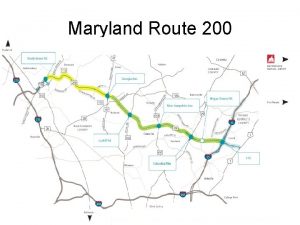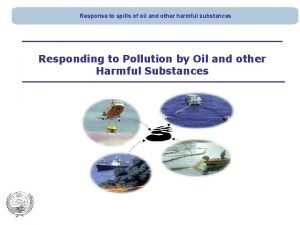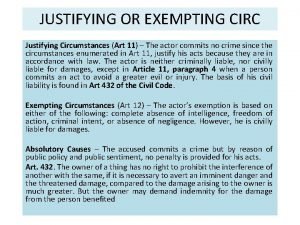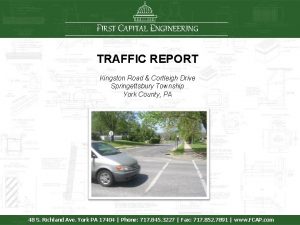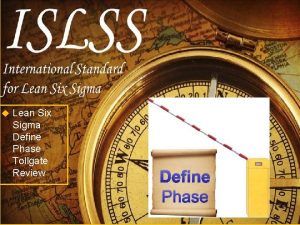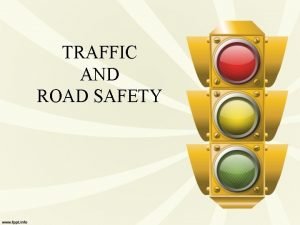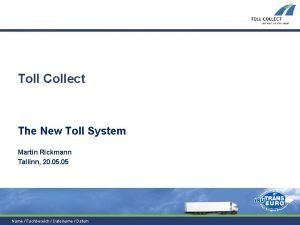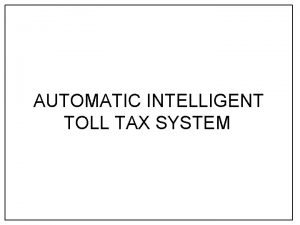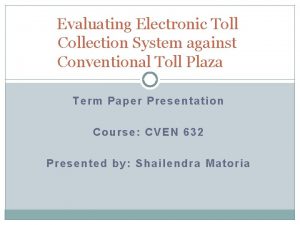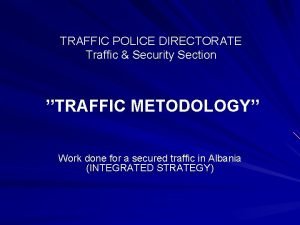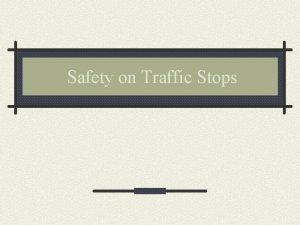Toll Road PPPs Identifying Mitigating and Managing Traffic














- Slides: 14

Toll Road PPPs: Identifying, Mitigating and Managing Traffic Risk OLC Webinar 31 st October 2017

• • Forecasting and Traffic risk Where does it come from? How can it be reduced? How can it be managed? 2

The Importance of Forecasting • Forecasting is vital for all fields of science, social science and human endeavor • Forecasting is particularly vital for infrastructure – forecasts allow us to plan, design, dimension and finance infrastructure • BUT the world is becoming more complex and interdependent and the human skill of forecasting is becoming more difficult • This is a particular problem when forecasts are relied upon to raise scarce public and private capital for infrastructure as is often the case in PPP projects • Toll road PPPs are the enfant terrible in this respect with a history of project failures resulting from inaccurate financing TEXAS TOLL-ROAD OPERATOR FILES FOR BANKRUPTCY Wall Street Journal, March 2 nd 2016 AUSTRALIA: ANOTHER TOLL ROAD GOES BANKRUPT The Newspaper. com, SPANISH COURT REJECTS STATE BAILOUT FOR BANKRUPT MOTORWAYS REUTERS, FEBRUARY 26 TH 2015

What is Traffic Risk? • Where demand revenue for an infrastructure project is over-estimated • Has led to financial distress through defaults, bankruptcies, renegotiations and government bail outs • Recurring issue in transport projects (particularly toll road PPPs) • Only 1 of 14 US toll roads studied by JP Morgan (1997) exceeded original revenue forecasts • On average, actual traffic was 60% of the forecast • Standard & Poors (2005) found actual traffic averaged 77% of forecast levels in a study of 104 international toll roads

The Traffic Forecasting Process • Forecasts can be produced by various project parties • Typically developed using a Travel Demand Model (TDM) • TDM is the forecasting base which replicates existing travel demand road network • Consists of trip matrix, network and key behavioral parameters • New projects are inserted into this model to predict how travel changes into the future

• • Forecasting and traffic risk? Where does it come from? How can it be reduced? How can it be managed? 6

Where does traffic risk come from? It’s part of the human condition – 3 key sources • Error: our technical limitations in understanding the current demand for travel • Uncertainty: our imperfect knowledge of the future • Bias: our pursuit of incentives – Optimism bias – Strategic Misrepresentation – The Winner’s Curse Example of Traffic Risk in Road Traffic Forecasting

• • Forecasting and traffic risk? Where does it come from? How can it be reduced? How can it be managed? 8

How can it be reduced? Error Uncertainty Bias Better Modeling Sensible Long-Range Better Alignment of Forecasting and Stable Policy Incentives Environment - - - Deep data collection to understand the existing/base market for a project Long-term monitoring of traffic trends Adhere to industry standards in traffic modeling Focus on willingness to pay, bring in specialist expertise - - Realism in forecasting assumptions Stability in policy environment so as to not threaten the competitive position of the project (e. g. toll/tariff policy) Be explicit on ramp-up forecasts and time period Sensitivity test key errors to understand size of risk -Set a benchmark/reference case forecast by undertaking high quality public sector demand studies -Independent review/ benchmarking of demand studies -Provide base models to bidders -Encourage due diligence -Penalize aggressive forecasting in bid evaluation -Ensure concession agreement is robust BETTER PROJECT PREPARATION & STRUCTURING

• • Forecasting and traffic risk? Where does it come from? How can it be reduced? How can it be managed? 10

How can it be managed? : Risk and Reward • Traffic risk can never be fully eliminated • The question of how to manage remaining risk depends on: – The underlying profitability/cost recovery of the project (e. g. NPV) – The impact of downside risk • Generally only government has the control and financial resources to manage high risk/low profitable projects Options for managing demand risk in toll road projects

Measuring Risk and Reward STEP 1 – BUILD A FINANCIAL MODEL OF THE PROJECT STEP 2 – SCENARIO TEST TRAFFIC AND THE FINANCIAL IMPACT

Key Takeaways • Error can be reduced through better data collection and modeling • Uncertainty can be reduced by sensible long-range forecasting and creating a stable policy environment • Bias can be reduced through better alignment of incentives in the bidding process • Residual traffic risk can be managed through careful project structuring that considers risk/reward tradeoffs • Governments should hire experienced technical and transaction advisors to support the due diligence, structuring and procurement of projects 13

Thank you! Click Here for link to the new GIF/PPIAF Publication on Traffic Risk 14
 Toll road 200 maryland
Toll road 200 maryland Identifying and non identifying adjective clauses
Identifying and non identifying adjective clauses Whats an adjective clause
Whats an adjective clause Information essential
Information essential Chapter 4 vulnerability assessment and mitigating attacks
Chapter 4 vulnerability assessment and mitigating attacks Identifying and managing project risk tom kendrick
Identifying and managing project risk tom kendrick Examples of mitigating factors
Examples of mitigating factors Response
Response Justifying and exempting circumstances
Justifying and exempting circumstances Incomina
Incomina Intelligent traffic solutions
Intelligent traffic solutions Kingston traffic report
Kingston traffic report 28-693a
28-693a Tollgate review
Tollgate review Bosnian genocide death toll
Bosnian genocide death toll
